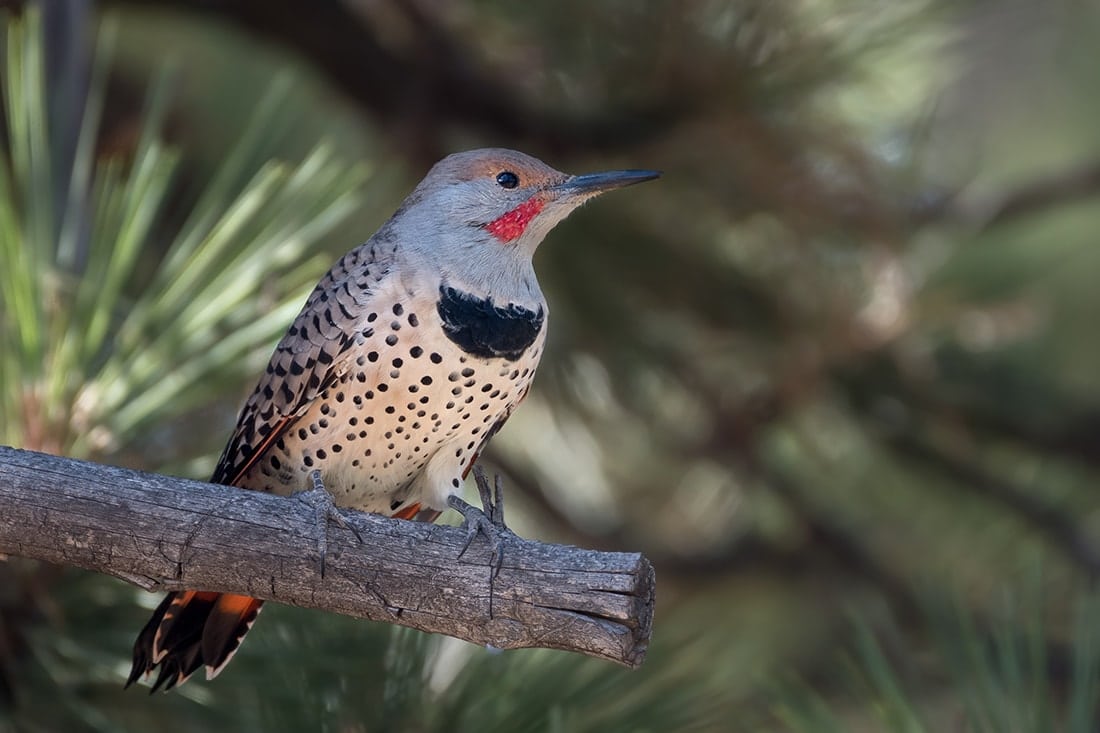

In the same ball field as the flickers were a bunch of magpies. Except for the dipper (whose eyelids are famously white), can you tell me the color of its palpebrae? But I haveta say, I’m really starting to get into this matter of learning the colors of birds’ eyelids. The avian palpebra is destined to be the next big thing in hardcore ID for the serious field birder-you heard it here first. But we’re come to our senses, thanks to Jon and Kimball’s book, and ID’ing warblers from below is now de rigueur for birders. Remember when the Dunn and Garrett warbler guide came out? (And can you believe it’s been almost a quarter century?) Many of us, I think it’s fair to say, were just a bit incredulous about those plates showing warbler after warbler in up-the-undertail poses we’d dismissed as more-or-less useless for real birding applications. I’m working up the manuscript right now: “On the spectral reflectance of the palpebrae of the HY backcross ♂ Northern Flicker, Colaptes auratus cafer x C. So, the Northern Flicker, at least in the case of the hatch-year backcross male, has gray eyelids. Hoping to document the bird vocalizing, I made a video (with a fall field cricket, Gryllus pennsylvanicus, singing in the background): Do Yellow-shafted and Red-shafted flickers differ in their vocalizations? And, if they do, what about their hybrid progeny? I heard the bird call, and that got me to thinking about something I’d discussed a while back with flicker fanatic Steve Shunk. Differences in plumage colour can easily. I wouldn’t call this an “FI” (first-generation) hybrid, but maybe it had a Yellow-shafted grandparent (making it an “F2”) or great grandparent (“F3”)? Discerning flicker backcrosses, like documenting flickers sticking out their tongues, is one of those things we’re doing a lot more of in this age of digital birding. Unlike other woodpeckers, the flicker spends most of its time foraging on the ground (Wiebe and Moore 2008).

See those couple of strands of reddish on the nape? Those are indicative of Yellow-shafted ancestry. These birds are simply searching for a place to call home and you can help provide them with such a place. Problems can arise in places you wouldn’t normally expect them, like heavily wooded areas where these birds appear to have an adequate supply of trees and snags (standing dead trees). I don’t think it’s a Red-shafted Flicker after all. Red-bellied woodpeckers, and the Northern Flicker. There’s something else about this flicker. I’m sure I’ve seen tens of thousands of flickers over the years, but this is the first time I ever saw one stick its tongue out in the manner recorded here. with a bird, any bird, even a very ordinary bird, especially an ordinary bird, more often than not yields a delectable discovery like this one. But there’s a bigger lesson here: A bit of Q. I clicked the clicky button on my camera at precisely the instant this woodpecker stuck out its tongue.
#WOODPECKER FLICKER HOW TO#
What was that again about flicker tongues? In the last installment of How to Know the Birds, we looked at the avian eyelid, so I suppose it was inevitable that there would follow this appreciation of the avian tongue.


 0 kommentar(er)
0 kommentar(er)
